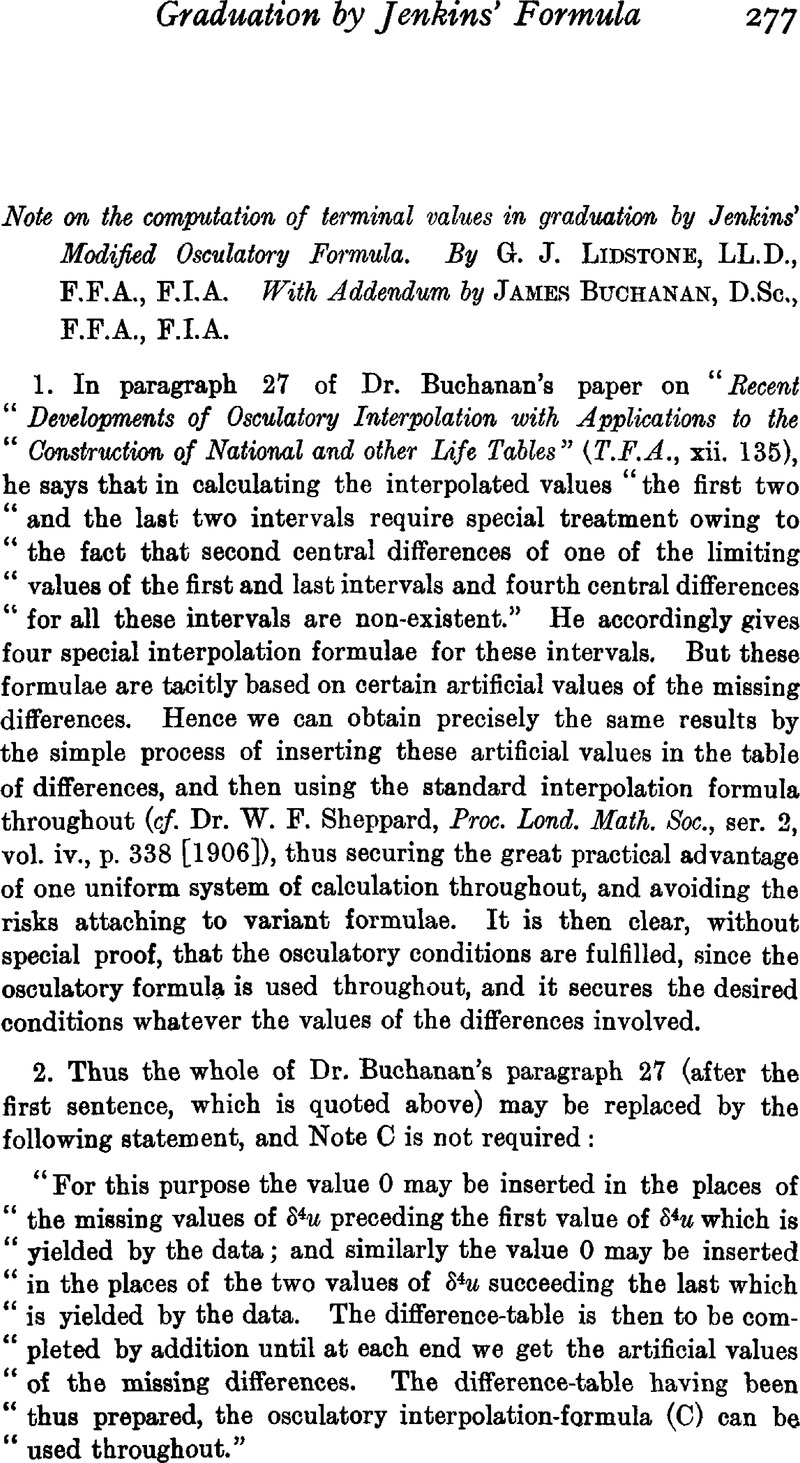Article contents
Note on the Computation of Terminal Values in Graduation by Jenkins' Modified Osculatory Formula
Published online by Cambridge University Press: 07 November 2014
Abstract

Information
- Type
- Other
- Information
- Copyright
- Copyright © Institute and Faculty of Actuaries 1929
References
page 278 note * As corrected by Dr. Buchanan, post p. 288.
page 279 note * As corrected by Dr. Buchanan, post p. 288.
page 279 note † Provided these artificial values are consistent. In some cases it may be better to insert suitable artificial values of two u's preceding and two u's succeeding those given by the data, and so build up the difference-table directly–cf. Buchanan, loc. cit., p. 133.
page 281 note * If, instead of inserting zero fourth differences at the beginning and end of the range, we can insert assumed values of u preceding and following the known data, consistent with the trend of these data, the resulting fourth differences need not be zero. The effect of this would be that the curve, while still osculating throughout, would be released from the requirement of passing through the terminal guiding values, a possible advantage from the point of view of smoothness.
- 1
- Cited by

